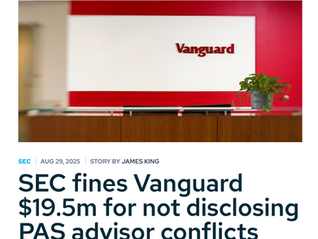- Rubin Miller, CFA

- May 11, 2024
- 5 min read
What are taxes worth, anyway?
I am in Palm Springs, California, for a friend's wedding, and ate breakfast this morning with a couple (about my age) from Boston, Massachusetts. He works for her family's "family office" (i.e. the financial operations of an extremely wealth family), and she unfortunately lost her Dad — who was clearly a patriarchal, financially successful, fantastic person — earlier this year.
The husband has 2 jobs: (1) son-in-law concerned broadly with his widowed mother-in-law's happiness, and (2) family office executive accountable to the family financials.
"She lives a few months of the year in Palm Beach," the wife told me. The husband quipped, "If we could only get her down there for 6 months and 1 day!" Meaning if we could get her to live more than half the year in Florida, she could claim residency and avoid income taxes. Then he chuckled, because he was only half serious. He has 2 jobs, and I could already tell is the type of person who took both of them seriously.
I live in Texas, and moved there from California. I am intimately familiar with geographic tax maneuvers, and so I know what he means: Massachusetts has a 5% state tax on income, and taxes certain capital gains at 8.5%. Both of those are of course also taxed by the federal government on top of that.
If tax percentages disinterest you, or make your head spin, and I might be losing you already...good! Lean into that feeling and keep reading. You probably don't like thinking about taxes because you wouldn't consider moving somewhere else just because of them. Maybe you like where you live, or you don't like change. These are great to know to ensure you make financial decisions that will make you the happiest person possible.
It's OK to not really care about state income taxes (they're going to exist whether you care or not, so you don't have to care). Importantly, it means you care a lot about other, presumably more important, stuff.
But taxes are why people frequently move to Texas and Florida (and Alaska, Nevada, New Hampshire, South Dakota, Tennessee, Washington, and Wyoming). These 9 states in the U.S. allow you to ONLY pay federal income tax, and spare you any additional income taxation from the state.
What is the tradeoff?
Sometimes it's shitty roads, left unloved by the lack of state resources via the lack of state taxation. But you can still find decent roads in these states.
Sometimes it's shitty public schools for the same reason. But you can still find decent schools in these states, too.
Of course income tax isn't the only source of state tax revenue. There are also things like sales tax and property tax. Some states with low income taxes might not be so attractive based on how much you shop, or what kind of house you want to own.
If you really, really want to optimize your tax life, you can do it. Consider the arbitrage of living and working in Vancouver, Washington, just hundreds of yards from the Oregon border. Oregon has no sales tax. So you can live in a state with no income tax and shop in a state with no sales tax.
The tradeoff here is simply that you have to live in Vancouver, WA — which is great, as long as you want to live there.
But what if, like me, your parents live in Ohio? Or what if your job is in Georgia, or your girlfriend is in New York?
Many people don't have the desire to consider geographic tax maneuvers because life's other anchors outweigh taxes.
Taxes are a thing. But they aren't the only thing.
Family is a thing. Weather is a thing. Girlfriends are a thing. Local and state politics are a thing. Grocery store accessibility, public transportation, gas prices, job opportunities — there are many critical inputs.
And the reasonable output sometimes will simply be: I don't make decisions based on state income taxes.
Furthermore, the same person that might hate taxes can also love his girlfriend in New York. It's expensive to move and be with her (top marginal state income tax bracket is 10.9%!), but maybe that decision isn't even a decision, because we only live one short life on this earth, and we want to be with whom we want to be with.
As Walt Whitman wrote:
Do I contradict myself?
Very well then, I contradict myself.
I am large, I contain multitudes.
This is what managing tradeoffs means. We can't have it all, so we often will contradict our ideal preferences because life isn't a series of pureplay, two-factor, Vancouver, WA decisions. It's almost always multi-dimensional and nuanced.
So yes, there is such thing as geographic tax alpha. You can maneuver your life to pay less taxes. But it is not, as economists say — ceteris paribus — "all else being equal."
You can't hold the rest of your life constant. It's isn't typically equal. You can't see your family as much, be with your girlfriend, have your same job or roads or schools or sunsets.
The big difference between the decision of where you live and what taxes you pay, versus something like the decision I talk a lot about — how to design the best stock portfolio — is that places like Vancouver, WA, do actually exist. For some rare people, maybe their family lives nearby and they work remotely, this might be an incredible financial move with minimal other sacrifices.
Whereas we are all trying to do the same thing with our stock portfolio. We want it to grow as much as possible with as little risk as possible. It's not a unique decision, and we don't have unique inputs. There are Nobel Prizes won on how to do it properly. The output of a humble portfolio with low fees, broad diversification, and limited tax drag is optimal across nearly all stock investors.
Whereas, should her mom spend 6 months and 1 day in Florida? I don't know. It depends.
Remember, the son-in-law has 2 jobs: family office executive focused on her financials, and devoted son-in-law focused on her happiness.
Like most high-quality decisions in financial planning, the answer starts with a question: what does she care about?
That's why he chuckled...because he knows this. Maybe all else can be equal, her family will visit her in Florida often because the grandkids love Disney World, and she should consider optimizing on taxes because maybe she wants to make large philanthropic gifts in the coming years.
But maybe she will have to see her family less because they are too busy to travel and hate Florida humidity and politics, and she should optimize on time with them instead. Just pay the stupid Massachusetts taxes and play with your grandkids more.
There is no answer without knowing what we are trying to solve for, first.
But what people don't do enough is realize that there is a line, and it's a good exercise to think about where yours is drawn. Because tax laws are tax laws. What does "all else being equal" mean? Can we get close to an arbitrage, where our happiness in one place will be the same as another, but pay less taxes? For some people, the answer really can be yes.
But she's not going to be in Florida for 6 months only each year (from a tax perspective, "not more than half the year" and therefore not enough to claim residency). Somehow that sounds silly, but add 1 day and it is potentially a genius tax maneuver. That is the impact of arbitrary tax laws on our lives. The impact of government on our lives. The impact of external forces, of competing interests, and the ensuing tradeoffs that must be managed.
But such are our lives. We can't control all of the inputs, yet we can still prioritize what we care about, which is unique to each of us, and then make high-quality decisions based on our circumstances.
Oh, the difference a day makes.
End.









